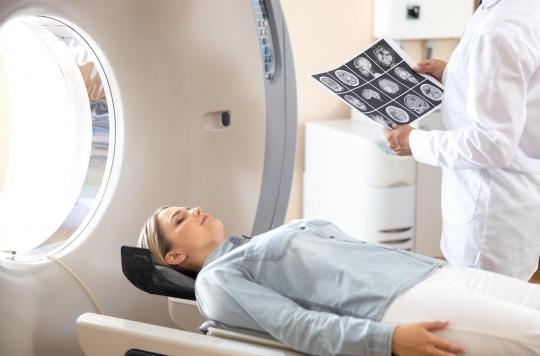In a study published in the journal JAMA Neurology, Italian researchers show a link between loss of smell and brain abnormalities in a patient with Covid-19.

- Scientists have noted through an MRI that the region of the brain called the right rectus gyrus, involved in olfaction, is abnormal.
- The scientists noted through an MRI an anomaly in the region of the brain called the right rectus gyrus, involved in olfaction and a hypersignal in the olfactory bulbs.
- Twenty-eight days later these abnormalities disappeared along with the symptoms.
- Similar results were observed in a patient in Marseille.
The loss of smell linked to the SARS-CoV-2 coronavirus could have consequences for a part of the brain, the one that is precisely involved in olfaction. Italian researchers studied magnetic resonance imaging (MRI) scans of the brain of a 25-year-old woman. She had Covid-19 and had, among other symptoms, anosmia, that is to say a loss of smell. They have just published their work in the journal JAMA Neurology.
Lesions on the olfactory bulbs
The day her first symptoms appeared, the patient had a brain MRI. On the images of the examination, the scientists note that the region of the brain called the right rectus gyrus, involved in olfaction, is abnormal. They also observe that the patient presents a hypersignal in the olfactory bulbs. These are responsible for transmitting information related to the sense of smell to the brain. A lesion on at least one of the two olfactory bulbs can be enough to cause a loss of smell. Twenty-eight days later, when the patient has completely regained her sense of smell, another MRI of her brain is performed. On this one, the abnormalities visible in the first MRI have almost all disappeared.
Researchers believe that SARS-CoV-2 can enter the olfactory bulb and then sneak into the central nervous system of the brain. Once reached, it therefore causes a direct attack which generates an olfactory dysfunction. Thus, the anosmia would be of neurosensory origin. Nevertheless, to verify their results, the authors would need analyzes of the cerebrospinal fluid, examinations which unfortunately were not carried out on this patient. But, to deepen their work, the authors could also examine the brains of patients who died of Covid-19 and thus verify the presence or absence of viral particles in their brain tissue. Which would be further proof that Covid-19 can reach the brain.
Another study finds similar results
Last May, neuroradiologists at the Conception Hospital in Marseille obtained similar results. In the magazine Neurology, they presented their work on the case of a 27-year-old patient with SARS-CoV-2. First asymptomatic carrier, this young doctor had been screened as part of his work. But four days after this test, two symptoms appear: loss of taste and smell. On the MRI that he passes a few days later, the neurologists observe a bilateral edema of the olfactory bulbs – which have grown abnormally – and an altered hypersignal. The patient regains his sense of smell fourteen days later. Although cured, he did another MRI twenty-four days after the first signs of his symptoms. As in the other study, the previously observed abnormalities are no longer visible on this MRI.
These two studies are not sufficient to draw general and scientifically validated conclusions. Nevertheless, they seem to corroborate the same hypothesis: patients with SARS-CoV-2 who have anosmia, have abnormalities in the central nervous system of the brain. These disappear when they regain their sense of smell.
.















